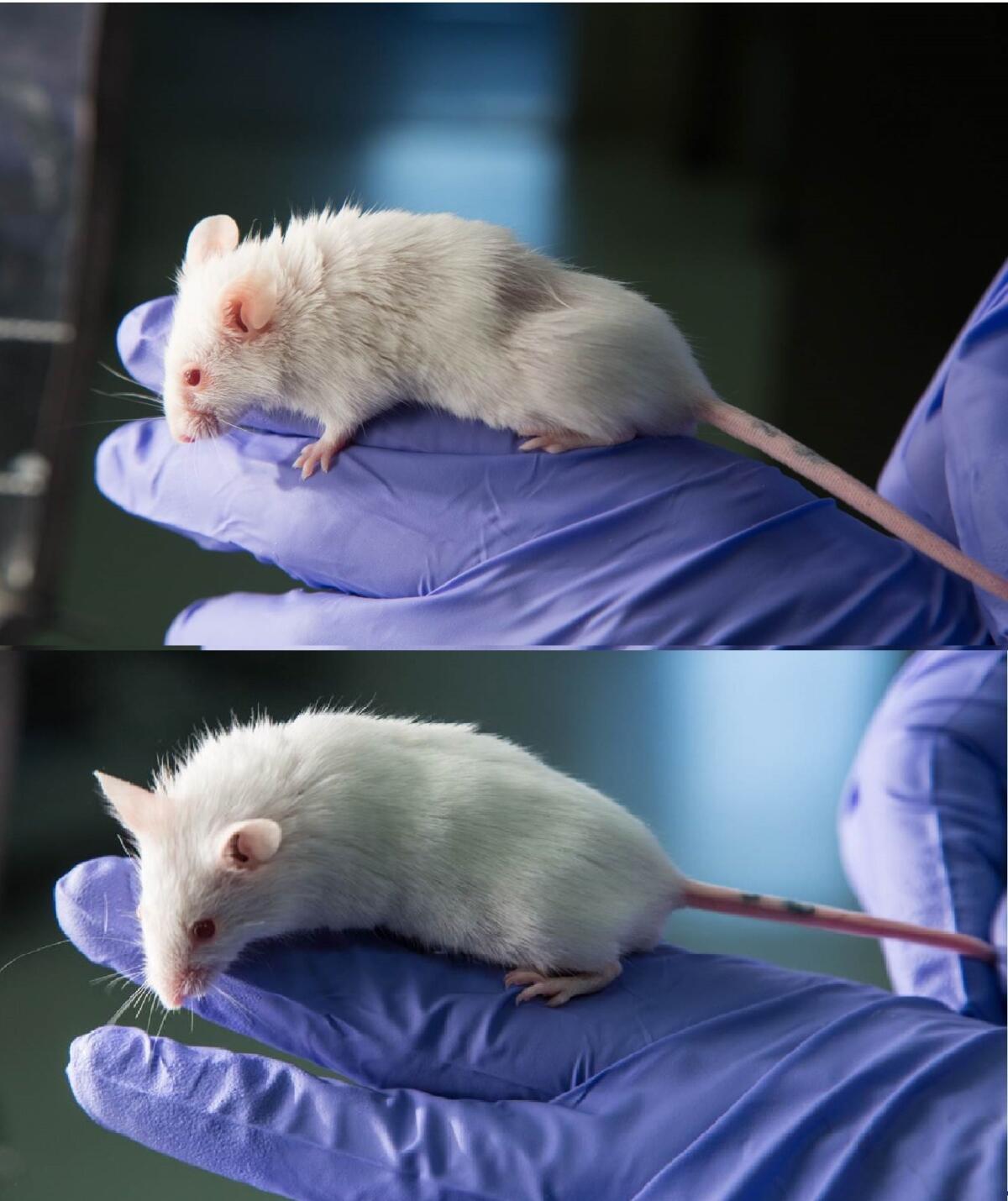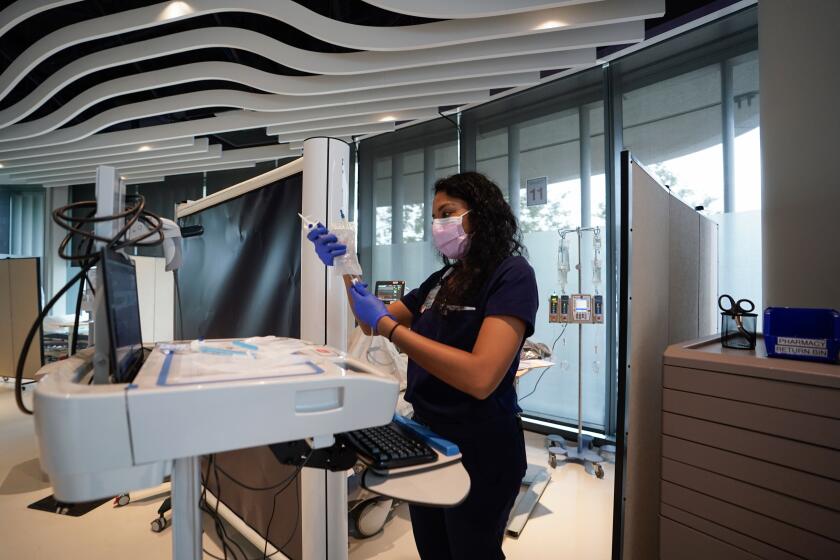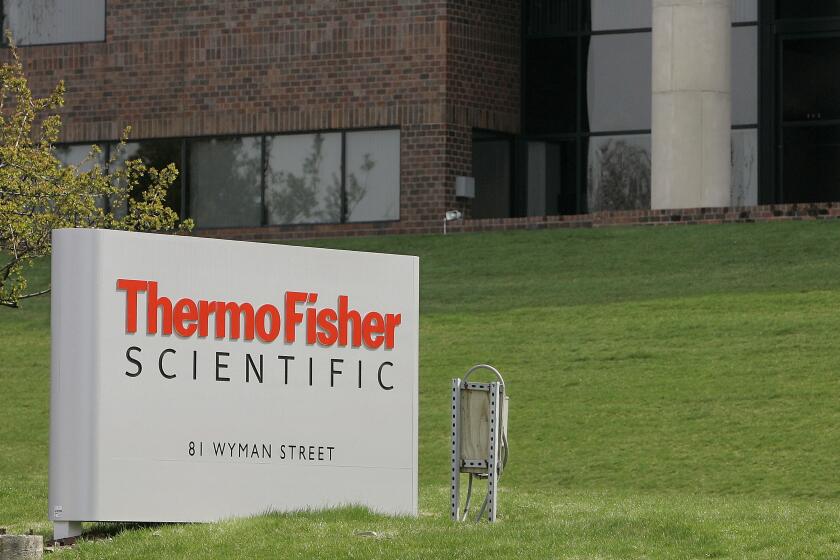Possible Alzheimer’s drug cut mice aging symptoms
A potential anti-Alzheimer’s drug tested in mice unexpectedly reduced general symptoms of aging, according to a study led by Salk Institute researchers.
The study examined the effects of the drug, J147, in a strain of mice bred to rapidly age and show signs of senescence. It is the second mouse model to show effectiveness.

Besides improved cognition compared to controls, the treated mice exhibited better metabolism, reduced blood leakage from microvessels in the brain, and other improvements. Researchers led by Dave Schubert and Antonio Currais published the study Wednesday in the journal Aging.
Abrexa Pharmaceuticals, a San Diego company formed to commercialize J147, has licensed the compound from Salk, and is seeking to raise $10 million to fund Phase I clinical trials in early 2016. The drug is to be tested for Alzheimer’s, not for anti-aging properties, said J. Ernest Villafranca, the company’s chief executive.
Abrexa is planning four Phase 1 trials, Villafranca said. The company can be reached at villafranca.ernie@sbcglobal.net.
Researchers tested the compound on three groups of three-month old mice, one of which was fed J147 with food for seven months. The other, a control group did not. They were tested for cognition with a maze test. A second control group consisted of mice examined when they were three months old.

Besides improved cognition, genetic and metabolic profiles of the mice given J147 more closely resembled those of the three-month old mice than did the untreated mice, the study said.
Most research on the neurodegenerative diseases focuses on blocking processes believed to cause the disease. One fills neurons with toxic proteins known as beta amyloid, another causes deposits of another protein, tau. However, drugs that target amyloid have so far failed to show more than modest effectiveness in clinical studies. While a recent study has indicated that an aspirin relative targeting tau might be useful, no tau drugs have been approved.
In light of this inadequate record, Schubert and colleagues looked for drugs using a phenotypic screen, to find compounds that alleviate the aging-related changes associated with Alzheimer’s.
“The studies that have been done at the Salk and other places suggest the compound is very powerful with regards to delaying the effects of amyloid and also the effects of aging on cognition,” Villafranca said. “Aging is the number one risk factor for Alzheimer’s disease.”
The amyloid model is based on a very small percentage of Alzheimer’s patients, less than 1 percent, that are genetically disposed to accumulate amyloid and predictably develop the disease, Schubert said.
In addition, people with Down’s syndrome, who have an extra copy of a gene implicated in the disease, almost invariable develop Alzheimer’s as they age.
Schurbert says these models do not adequately parallel the course of “sporadic” Alzheimer’s in people, in which genetic risk factors play a much weaker role.
That’s where J147, derived from a spice in curry, comes in. It was developed through such a phenotypic screening, based on the observation that people in India, where curry is widely consumed, rarely get Alzheimer’s.
The potential drug has been previously tested in Alzheimer’s model mice, which develop amyloid deposits but not tau tangles. It was found to have memory-enhancing effects.
The new study, showing effectiveness in another strain of mice, lends further credence to J147’s usefulness, Schubert said.
Another Alzheimer’s researcher said the study is worthy of further research.
The finding is “intriguing”, said Dr. Paul Aisen, who heads the University of Southern California’s Alzheimer’s Therapeutic Research Institute in San Diego. Aisen is leading research into Alzheimer’s therapy based on the amyloid hypothesis.
“This generally supports the idea that J147 might be useful for AD, since aging is the most important risk factor for AD,” Aisen said by email. “But it should be emphasized that the development of the compound is still at a very early stage, and clinical testing in humans is likely to be very challenging.”
Get U-T Business in your inbox on Mondays
Get ready for your week with the week’s top business stories from San Diego and California, in your inbox Monday mornings.
You may occasionally receive promotional content from the San Diego Union-Tribune.








